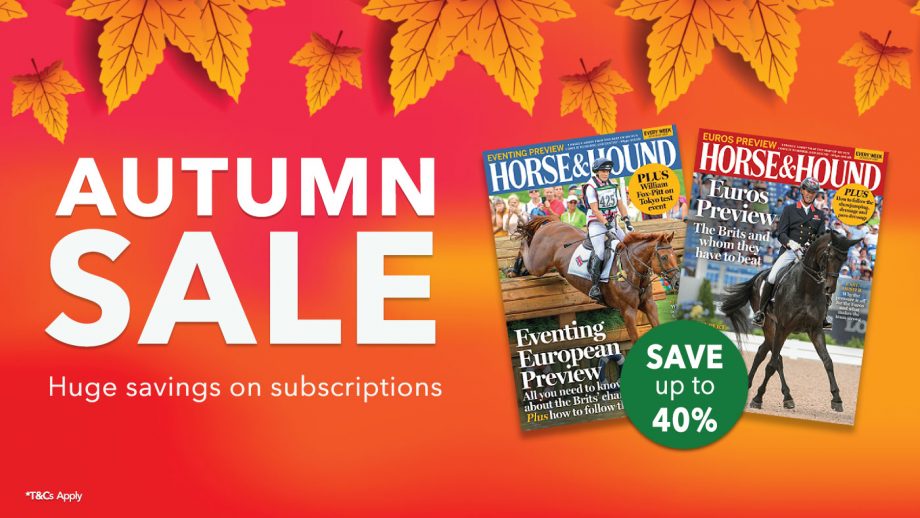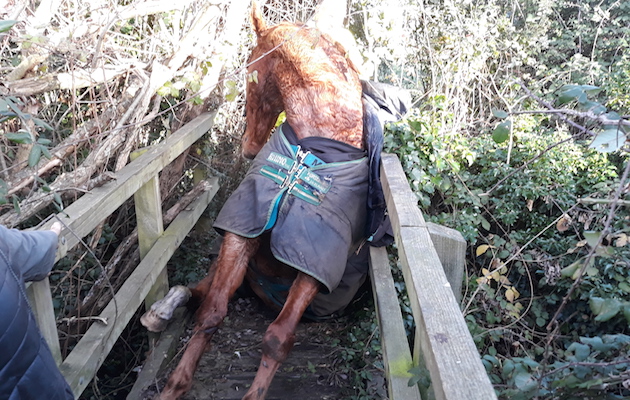
A rider plans to make history and raise money for charity by swimming the English Channel.
Heather Clatworthy, British Horse Society (BHS) senior executive of access and rights of way, hopes to raise £20,000 for the society when she takes on the challenge in June 2020. If successful Heather will be the first woman from Northern Ireland to complete the challenge.
Heather told H&H swimming the Channel was always on her bucket list.
“I don’t have a horse at the minute because I have two young children who are my priority,” she said. “I spent many years breaking in youngsters and spent a lot of time on the hunting field so I’m temporarily filling my competitive streak and adrenaline junkie side by swimming.
“The money I raise will go towards the different BHS campaigns and work. Every day I see how the work we do impacts people and it’s really rewarding being in a job where we help equestrians across the UK and Ireland.”
In 2016 Heather became the first person since 1929 to swim across a 13-mile stretch of sea between Inishowen and Portstewart in Ireland.
“At the time I didn’t know if could do it but it gave me confidence that I have it in me to do the Channel swim,” she said.
“I’m having to do an incredible amount of training. I’m a working professional as well as a mum but the way I see it is if you want to achieve something in your life, there’s always a way to do it.”
Heather, who will take on the challenge wearing a swimming costume, cap and goggles as set out in the official Channel Swimming Association rules, said the biggest challenge she faces is the cold water.
“When I started this journey I assumed the main thing I would need to work on to swim to France is fitness – It’s a massive factor, but it’s the ability to withstand the cold for long periods of time that’s the most challenging. I swim in open water all year round and train in rivers because I live quite far from the sea. In the winter it can be gruelling, it’s like stepping into a freezer, but the training makes a huge difference,” she said.
Article continued below…

Equestrian TV stars take on 340-mile challenge
‘I’ve only ever ridden horses and motorbikes in the past seven years!’

Blisters, hills and floods will not stop determined animal lover on 300-mile challenge to help horses

Credit: TI Media
<a href="https://www.horseandhound.co.uk/news/horse-hound-subscription-offer-651358" rel="bookmark" name="*Autumn sale* Save 40% on Horse & Hound subscriptions”>*Autumn sale* Save 40% on Horse & Hound subscriptions
Take advantage of our sale on Horse & Hound magazine subscriptions today
“On the day there will be a crew on a fishing boat alongside me with an observer officiating the event. They make sure you’re ok and not suffering from exhaustion or becoming hypothermic, and you rely on the pilots of the boat to navigate you across because the English Channel is the busiest shipping lane in the world and you don’t want to run into tankers.”
Heather, who is offering free motivational talks ‘Believe in yourself and achieve anything’ to riding clubs and community groups for donations towards her fundraising, said to make history would be “incredible”.
“I want to be the best role model I can be for my children and I hope to inspire others to get involved in new sports. I’m not an elite athlete, I’m a working mum. I’ve no idea if I will make it or not but if I do I think it will be amazing for someone from Portstewart to achieve,” she said.
For all the latest news analysis, competition reports, interviews, features and much more, don’t miss Horse & Hound magazine, on sale every Thursday.


























